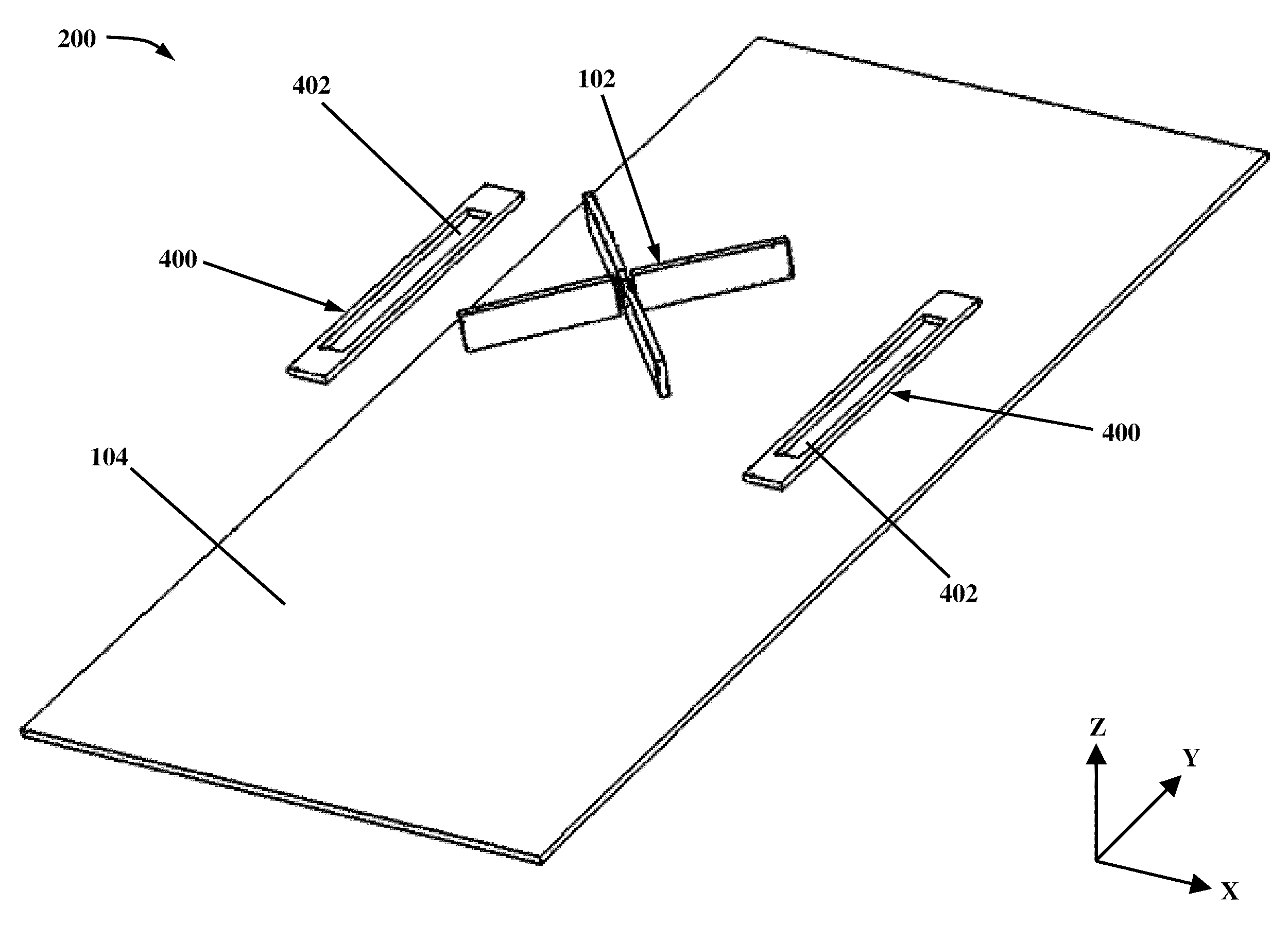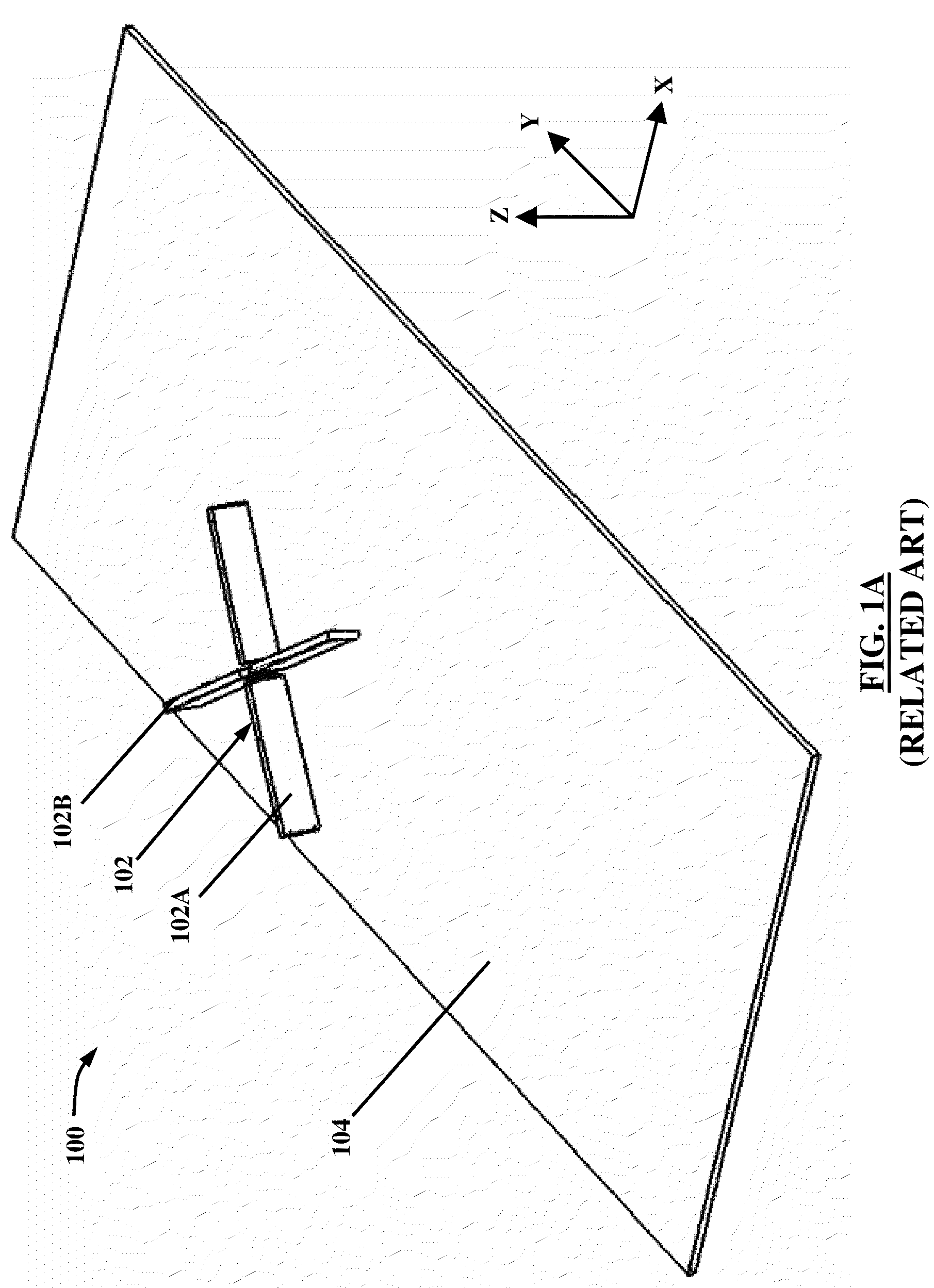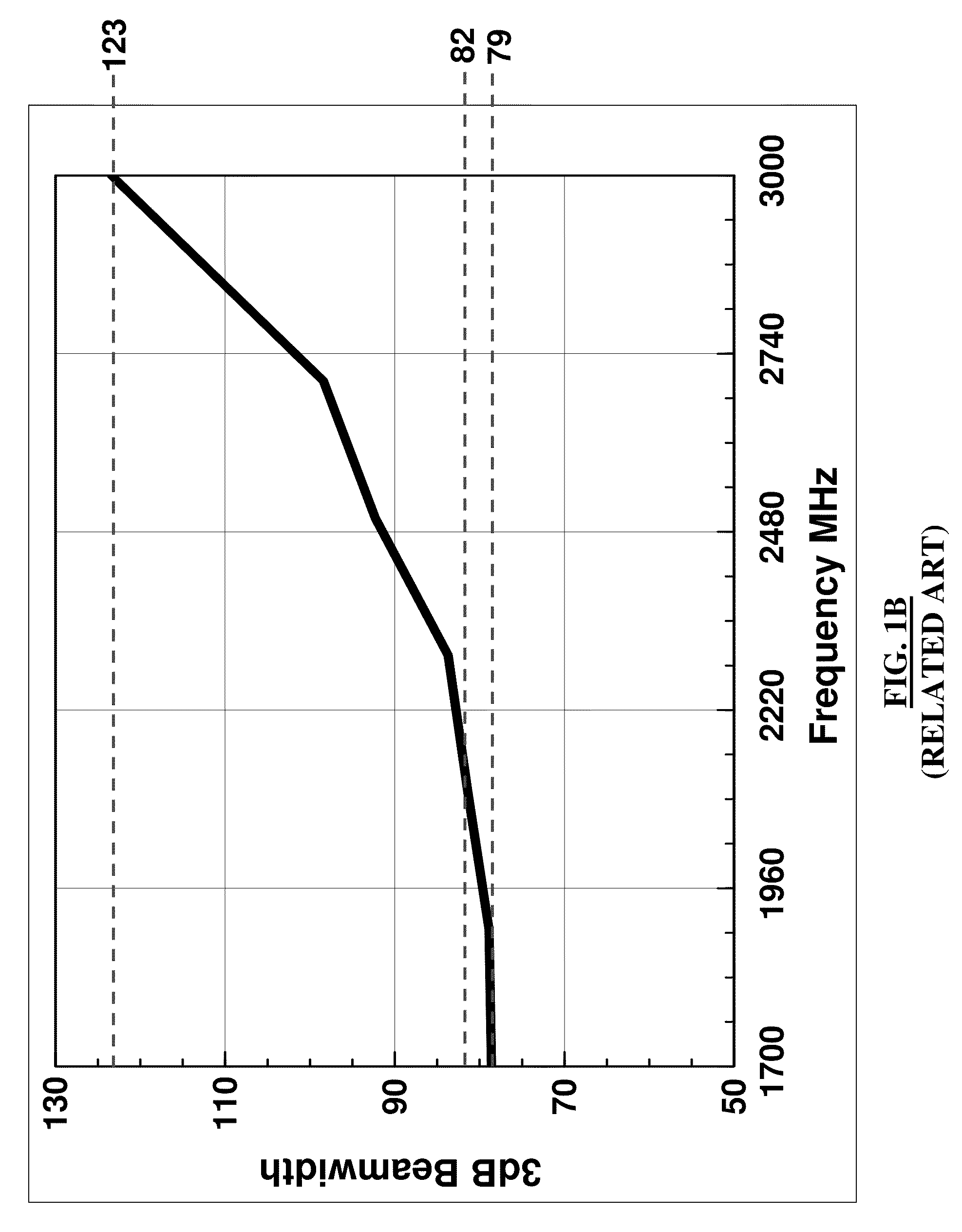Device and method for controlling azimuth beamwidth across a wide frequency range
a beamwidth and wide frequency range technology, applied in waveguide-type devices, electrical equipment, independent non-interacting antenna combinations, etc., can solve the problems of large variation in gain response, antennae that can operate across a wide frequency band have difficulty maintaining a reasonable beamwidth across their full frequency range, and are not suited to deploying networks in the higher bands
- Summary
- Abstract
- Description
- Claims
- Application Information
AI Technical Summary
Benefits of technology
Problems solved by technology
Method used
Image
Examples
Embodiment Construction
[0039]Wireless communication networks currently deployed in the 1700-2200 MHz (e.g., AWS, DCS, and PCS networks) operate with bandwidth a 24%. And when that frequency range is expanded to include networks that operate with frequencies as high as 2690 MHz (e.g., IMT-E networks), the bandwidth increases to 46%. The present invention goes even further by providing a wide bandwidth antenna that maintains a uniform azimuth beamwidth and, therefore, flatter gain response across a 55% bandwidth. In the embodiments described below, that 55% beamwidth is described primarily as being provided by the 2200-3000 MHz frequency range. However, it will be understood by those having ordinary skill in the art that those embodiments can be modified to provide similar performance enhancements in other frequency ranges without departing from the spirit of the present invention.
[0040]The technology of the present invention offers great flexibility in antenna sharing, network deployment, and logistic plan...
PUM
| Property | Measurement | Unit |
|---|---|---|
| Fraction | aaaaa | aaaaa |
| Angle | aaaaa | aaaaa |
| Frequency | aaaaa | aaaaa |
Abstract
Description
Claims
Application Information
 Login to View More
Login to View More - R&D Engineer
- R&D Manager
- IP Professional
- Industry Leading Data Capabilities
- Powerful AI technology
- Patent DNA Extraction
Browse by: Latest US Patents, China's latest patents, Technical Efficacy Thesaurus, Application Domain, Technology Topic, Popular Technical Reports.
© 2024 PatSnap. All rights reserved.Legal|Privacy policy|Modern Slavery Act Transparency Statement|Sitemap|About US| Contact US: help@patsnap.com










